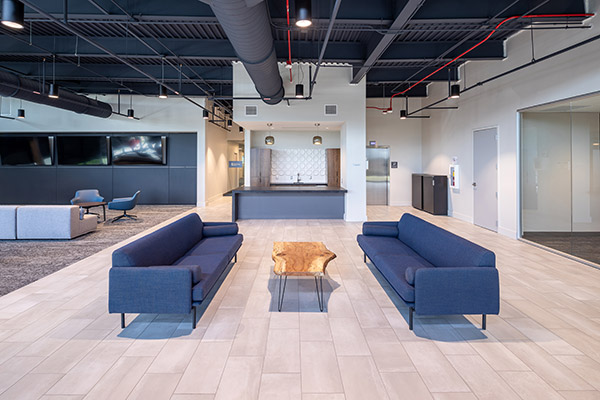This ambitious project, located at Houston’s spaceport, highlights how innovative design and strategic planning can propel the space exploration industry forward.
Vision Meets Reality
The project began with a clear objective: to create a home base for Intuitive Machines that could support their current operations and accommodate future growth. Traditional facility designs were deemed inadequate for the dynamic needs of Intuitive Machines, a company known for its entrepreneurial spirit and dedication to tackling complex problems.
From the outset, we knew that traditional facilities wouldn't fully meet Intuitive Machines' ambitions. “From the outset, we knew that traditional facilities wouldn't fully meet Intuitive Machines' ambitions,” said Brittney Swartz, managing operations director for the aerospace and industrial business practice at Burns & McDonnell. “They needed a space that could evolve with their innovative projects.”
Central to the facility is the flame range, a unique testing environment designed to advance the development of Intuitive Machines’ cryogenic engines for lunar missions. This on-site testing capability eliminates the need for time-consuming trips to remote sites, significantly enhancing efficiency and productivity.

Intuitive Machines Site
-
 An exterior look at Intuitive Machines site.
An exterior look at Intuitive Machines site.
-
 A break room at the Intuitive Machines site.
A break room at the Intuitive Machines site.
-
 A break room at the Intuitive Machines site.
A break room at the Intuitive Machines site.
-
 An interior look at Intuitive Machines site.
An interior look at Intuitive Machines site.
-
 An interior look at the Intuitive Machines site.
An interior look at the Intuitive Machines site.
-
 Brittney Swartz, managing operations director for the aerospace and
Brittney Swartz, managing operations director for the aerospace and
industrial business practice at Burns & McDonnell,
who worked on building the Intuitive Machines location.
“Flexibility was essential to this project,” Swartz explained. “We had to make sure the facility could adapt to future technological advancements and equipment needs. Proactive communication became a keystone because we never knew what they might need next.”
50 years
Time since the last U.S.-led moon mission before the Odysseus NOVA-C lander. This adaptability extends beyond the physical structure. The partnership was marked by regular meetings and ongoing dialogue, which facilitated rapid decision-making and alignment of objectives. This level of collaboration was crucial in a project where requirements could evolve quickly.
Strategic Site Selection
Choosing the right location was another critical aspect of the project. With the help of the site selection team at Burns & McDonnell, Intuitive Machines evaluated several potential sites before settling on Houston. The city’s developing spaceport and rich aerospace heritage made it an ideal choice, supporting local talent and helping to bolster Houston’s role in space exploration.
“They are a Houston-based company, and the city’s spaceport offered the perfect environment to attract local talent and build a strong footprint in the aerospace industry,” Swartz said.
Navigating Supply Chain Challenges
As a company that was essentially a startup only two years ago, Intuitive Machines faced typical challenges in securing raw materials and components. However, strategic planning for flexibility and scalability helped mitigate supply chain disruptions.
Intuitive Machines’ approach to supply chain management offers valuable insights for other companies in the aerospace sector. By planning for future needs and building flexibility into their operations, they maintained a steady flow of materials and components critical to their success.
A New Era in Space Exploration
2 years
The time span in which Intuitive Machines evolved from a startup to a key player in space exploration. The successful creation of the lunar production and operations center marks a significant milestone for Intuitive Machines and signals a new era in space exploration. This project exemplifies how the commercial space industry can shape the future of space exploration through innovation, collaboration, and strategic planning.
Reflecting on the project, Swartz said, “It’s an exciting time for space exploration. Our partnership with Intuitive Machines has reshaped the future of this industry, demonstrating the critical role of visionary facility design in pioneering new frontiers.”
As new technologies and trajectories emerge, the collaboration between Burns & McDonnell and Intuitive Machines serves as a model for executives in the aerospace and space industry, highlighting the importance of strategic design and partnership in driving innovation and discovery.



